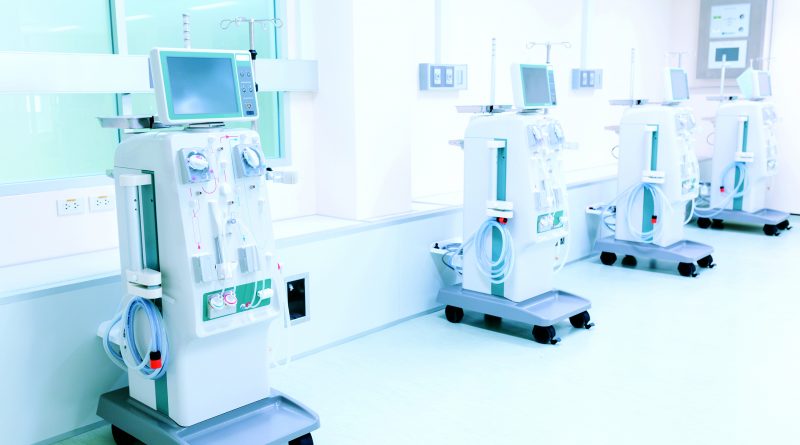The Crucial Role of Heating Technology in Advancing Medical Devices
The current medical devices market boasts an impressive array of approximately 10,000 diverse types of equipment. Each individual device must adhere to stringent manufacturing standards to guarantee accurate, efficient, and safe outcomes. In this discussion, Andy Selvy, Chief System Designer at Watlow, an industrial technology company, sheds light on emerging medical device trends and highlights the vital role of heating technology in the functionality of medical equipment.
The term “medical device” encompasses instruments, apparatuses, and appliances involved in diagnosing, treating, or enhancing the quality of life. Every component utilised in the creation of these devices must prioritize patient safety, reliability, and effectiveness. What is often overlooked, however, is the significant role played by heating technology in several commonly used medical devices.
Trends in Medical Devices
The medical device manufacturing sector is experiencing remarkable growth. For instance, the United Kingdom, home to over 2,000 device manufacturing companies, ranks as the third-largest medical device market in Europe and is projected to surpass £5 billion in value by 2025.
Notably, Ireland is steadily establishing itself as Europe’s leading med-tech hub. With more than 300 medical technology companies, Ireland holds the second position among medical technology product exporters in Europe. Astonishingly, 25 percent of the world’s diabetic population relies on injection devices manufactured in Ireland.
The success of Ireland’s renowned med tech sector can be attributed to active collaboration, with over 25 percent of companies adopting shared services mandates. This collaborative approach has facilitated the development of world-class operations and technology solutions within the sector.
Presently, there are several market trends posing unique thermal challenges. These trends include device miniaturization, increased throughput in diagnostic equipment, and a shift towards point-of-care diagnostics that prioritize preventative care and rapid medical decision-making. From the perspective of original equipment manufacturers (OEMs), they must also navigate increased globalization efforts, aiming to leverage a single device across all regions worldwide.
These shifts give rise to various manufacturing challenges. For instance, medical device producers must now consider a broader range of voltage requirements and adhere to increasingly stringent safety standards. Those focusing on device miniaturization face additional challenges, such as delivering high performance while carefully considering component placement to maximize space utilization.
Heating Technology in Medical Devices
Heating technology plays a crucial role in numerous medical devices, ranging from anesthesia delivery systems and respiratory therapy devices like ventilators to blood and intravenous (IV) fluid warmers and transfusion equipment. Heaters are essential for adding humidity to respiratory equipment, sterilizing instruments, and injecting fluids that help stabilize body temperature after operations.
When selecting an industrial heating equipment manufacturer to support a medical device project, it is imperative to consider the company’s portfolio of thermal solutions tailored for the industry. Watlow, with its extensive experience in manufacturing heating technology such as controllers, heaters, and sensors since 1922, excels in providing OEMs with solutions that enable exceptional thermal control, meeting the most demanding product specifications, including the combination of miniaturization and high performance.
For example, Watlow’s ULTRAMIC® advanced ceramic heater is an ideal choice for embracing the miniaturization trend. It delivers a thermal performance of up to 155 watts per square centimeter (cm) in a compact package size as small as eight millimeters (mm) squared. Equipped with onboard sensing for closed-loop temperature control, the ULTRAMIC saves space, reduces the machine’s overall footprint, and streamlines the manufacturing and assembly processes.
Moreover, Watlow’s small industrial electric heaters are meticulously engineered and manufactured with patient safety in mind, adhering to medical equipment, mechanical, and electrical isolation requirements. These heaters often include onboard monitors and safety limit controllers.
Contributions During Crisis
Several Watlow products have played a critical role in medical devices during the COVID-19 pandemic. For instance, our ULTRAMIC advanced ceramic heaters have been utilized by a medical device manufacturer in a product designed to treat COVID-19 patients, effectively reducing the need for ventilators.
Additionally, our foam-in-place silicone rubber heaters have assisted in COVID-19 vaccine testing. Another company relies on Watlow’s EZ-ZONE panel mount (PM) controllers to regulate airflow and create negative vacuum conditions in makeshift hospital tent systems.
Heating technology functions behind the scenes, ensuring the vital operation of diverse medical devices. When developing new technology, OEMs should consider partnering with heating experts who have expertise and knowledge in the regulatory environment they operate in and can collaborate to create breakthrough technologies and life-saving innovations.
For more information about Watlow’s solutions for medical applications, visit www.watlow.com
Related Products





